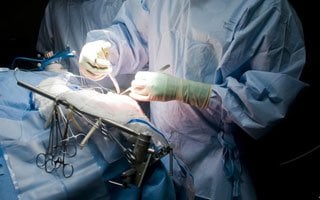Working with patients with electrodes implanted in their brains, researchers at the University of California, Davis, and The University of Texas Health Science Center at Houston (UTHealth) have shown for the first time that areas of the brain work together at the same time to recall memories. The unique approach promises new insights into how we remember details of time and place.
“Previous work has focused on one region of the brain at a time,” said Arne Ekstrom, assistant professor at the UC Davis Center for Neuroscience. “Our results show that memory recall involves simultaneous activity across brain regions.” Ekstrom is senior author of a paper describing the work published Jan. 27 in the journal Nature Neuroscience.
Ekstrom and UC Davis graduate student Andrew Watrous worked with patients being treated for a severe seizure condition by neurosurgeon Dr. Nitin Tandon and his UTHealth colleagues.
To pinpoint the origin of the seizures in these patients, Tandon and his team place electrodes on the patient’s brain inside the skull. The electrodes remain in place for one to two weeks for monitoring.

Six such patients volunteered for Ekstrom and Watrous’ study while the electrodes were in place. Using a laptop computer, the patients learned to navigate a route through a virtual streetscape, picking up passengers and taking them to specific places. Later, they were asked to recall the routes from memory.
Correct memory recall was associated with increased activity across multiple connected brain regions at the same time, Ekstrom said, rather than activity in one region followed by another.
However, the analysis did show that the medial temporal lobe is an important hub of the memory network, confirming earlier studies, he said.
Intriguingly, memories of time and of place were associated with different frequencies of brain activity across the network. For example, recalling, “What shop is next to the donut shop?” set off a different frequency of activity from recalling “Where was I at 11 a.m.?”
Using different frequencies could explain how the brain codes and recalls elements of past events such as time and location at the same time, Ekstrom said.
“Just as cell phones and wireless devices work at different radio frequencies for different information, the brain resonates at different frequencies for spatial and temporal information,” he said.
The researchers hope to explore further how the brain codes information in future work.
The neuroscientists analyzed their results with graph theory, a new technique that is being used for studying networks, ranging from social media connections to airline schedules.
“Previously, we didn’t have enough data from different brain regions to use graph theory. This combination of multiple readings during memory retrieval and graph theory is unique,” Ekstrom said.
Placing electrodes inside the skull provides clearer resolution of electrical signals than external electrodes, making the data invaluable for the study of cognitive functions, Tandon said. “This work has yielded important insights into the normal mechanisms underpinning recall, and provides us with a framework for the study of memory dysfunction in the future.”
Notes about this memory research article
Additional authors of the study are Chris Connor and Thomas Pieters at the UTHealth Medical School. The work was supported by the Sloan Foundation, the Hellman Foundation and the NIH.
Contacts: Arne Ekstrom – UC Davis Center for Neuroscience, Rob Cahill – UTHealth Media Relations and Andy Fell – UC Davis News Service
Source: UC Davis press release
Image Source: The image is adapted from the UC Davis press release and is credited to Dr. Nitin Tandon, University of Texas Health Science Center.
Original Research: Abstract for “Frequency-specific network connectivity increases underlie accurate spatiotemporal memory retrieval” by Andrew J Watrous, Nitin Tandon, Chris R Conner, Thomas Pieters and Arne D Ekstrom in Nature Neuroscience. Published online January 27 2013 doi:10.1038/nn.3315







